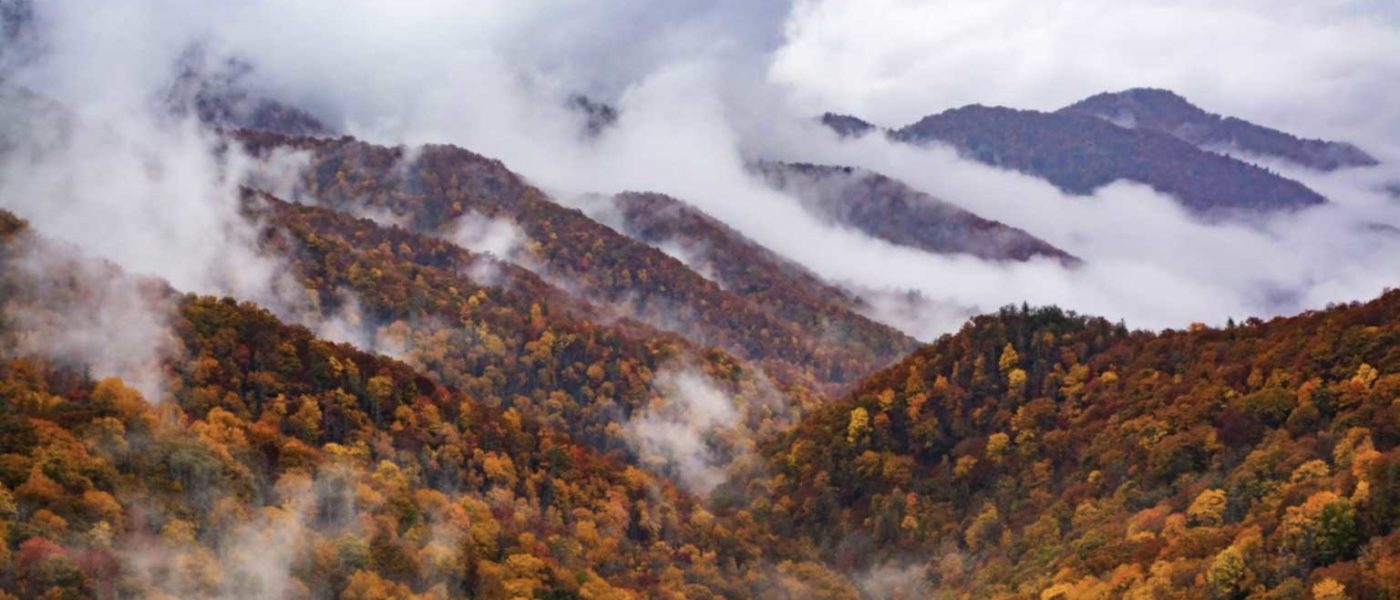Road Trip: Great Smoky Mountains National Park
Iconic photos like this one clearly show how this national park got its name. From early evening and on into morning, fog often rolls into the valleys here, creating this unusual ‘smoking’ effect. Experiencing this for yourself is made easy by the many accessible and breathtaking views found throughout the area. Nestled along the border between Tennessee and North Carolina, the 522,000 acres of Great Smoky Mountains National Park is frequently accessed from through Gatlinburg, Tennessee. Truly, any visit to this area needs to include a little time spent in the sister communities of Gatlinburg and Pigeon Forge, but don’t let either of their personalities cloud your opinion of the Smoky’s. In some ways, these two towns couldn’t be more different, but they have their similarities, too. Both offer a bevy of activities for a family looking for an interesting getaway, but Pigeon Forge leans toward the blatantly commercial (there are no less than 13 go-kart tracks on the main drive) while Gatlinburg is decidedly kitschy (think haunted houses, fun houses, treetop zip lines and the like). There are certainly some highlights to be found in both places – including Dolly Parton’s Dixie Stampede in Pigeon Forge and the tram at Ober Gatlinburg – but neither town compares to the astounding beauty and amazing sites of the park.
If you have a few days to spend here, the first one should be in the car, as counter-intuitive as that might sound. Take the Roaring Fork Motor Nature Trail, a one-way loop of Cherokee Orchard Road, stopping along the way for a few short hikes to become familiar with the flora and fauna. There are some beautiful hikes off this main road to a variety of views: old grist mills, settlements, and two of the parks most popular waterfalls, Rainbow Falls and Grotto Falls. Last time we were there, we encountered black bears playing beneath the spray and both deer and elk are common.
Spend your second day venturing deeper into the park. At Newfound Gap, you can straddle the line between the two states and see hikers traversing the Appalachian Trail. Farther in, a trip to the unique ramp up the viewpoint at Clingman’s Dome is a must-see. Or if you have a little more time, a short drive west from Gatlinburg will bring you to Cade’s Cove, an isolated and fertile valley that was once a hunting ground for the Cherokee Indians and home to some of the earliest settlers in the region.
The 11-mile, one-way loop road encircles the Cades Cove valley and is one of the best places in the park to view wildlife. You’ll see 18th- and 19th-century cabins, three churches, and a working grist mill, as well as other historic outbuildings. This part of the park is generally considered the best chance to see deer, black bears, and wild turkeys.
When to Go to the Great Smoky Mountains
The range, towering above its surrounding region, has a high annual precipitation, including quite a bit of snow, which can cause unexpected road closures that make Smoky Mountain travel difficult.
Spring, when all the snow has melted except on the mountain peaks and flowers are in full bloom, is the nicest time to travel to the Great Smoky Mountains. The fall is also a great time for a visit, when the leaves change and the colors are at their peak. Whenever you go, consider the park attracts more than 10 million visitors a year, so it can be crowded.
Inspiration
